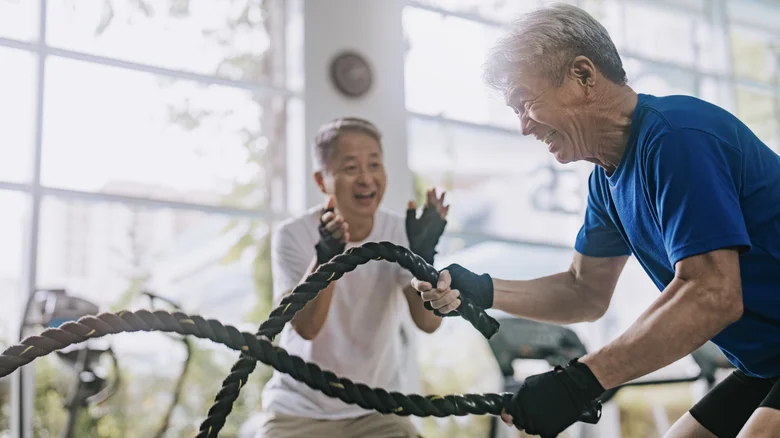As men age, their prostates begin to grow larger. The typical size of the prostate is that of a walnut, but as it grows, it can begin pinching against the urethra. A blocked urethra is why a common symptom of benign prostatic hyperplasia (BPH), or an enlarged prostate, is trouble urinating. This might include frequent or urgent needs to pee or having a weak urine stream.
An enlarged prostate is common, occurring in about half of men who reach the age of 75, according to Johns Hopkins Medicine. If your pee symptoms are bothersome, your doctor might prescribe medication to either shrink the prostate or ease the tissue surrounding the prostate to ease the flow of urination. Mild symptoms of BPH can be treated by changing some routines, such as reducing or avoiding caffeine or alcohol. Decongestants, antihistamines, and some antidepressants might cause urinary problems, which could exacerbate enlarged prostate symptoms. Regular exercise may not only reduce your risk of BPH but also relieve BPH symptoms. One exercise you’ll need to include in your repertoire is kegel exercises.
You might think Kegels are for pregnant or menopausal women, but everyone’s muscles in the pelvic floor could use some work. These are the muscles that hold your urine and poop, which can be helpful as you age. Kegel exercises are good for you to help with BPH symptoms such as a weak urine stream or incontinence. You’ll also boost flow to your prostate gland and improve sexual health.
You don’t need to put on gym clothes and check in at the gym to strengthen your pelvic floor muscles. You can do them just about anywhere, including right now. Start by finding the muscles of your pelvic floor. Pretend like you have to hold your pee and prevent a fart, but don’t clench your glutes. Hold this for up to 10 seconds while breathing normally, then relax for a few seconds. Then repeat 10 times, working up to 20 reps.
Aim to do your Kegel exercises three to four times a day, which might sound time-consuming, but remember you can do them anywhere. No one will notice, and getting into the habit of doing Kegel exercises every day could make a great wellness check-in. According to Midwest Institute for Non-surgical Therapy, you could see BPH symptoms improving in about six weeks.
Although Kegel exercises or any type of exercise won’t shrink your prostate, a 2009 study in The Physician and Sportsmedicine said exercising every day reduces plasma estradiol/testosterone ratio, insulin, and insulin-like growth factor-I, which are plasmas linked to an enlarged prostate. The Busch Center suggests 30 minutes of aerobic activities such as swimming, hiking, or speed walking at least three days a week, plus a few days of strength training. Be sure to include a few high-intensity intervals to skim off excess body fat, which is linked to BPH and prostate cancer.
You might have heard rumours about cycling and your prostate health. According to the Urology Group, a hard cycling effort may temporarily increase your levels of prostate-specific antigens (PSA), which might trigger an alarm for prostate cancer. However, cycling regularly reduces your risk of prostate cancer and doesn’t aggravate an enlarged prostate. Note that your cycling saddle creates compression that can lead to inflammation, which could put you at risk for cancer. Therefore, find an appropriate saddle that will protect your prostate.




